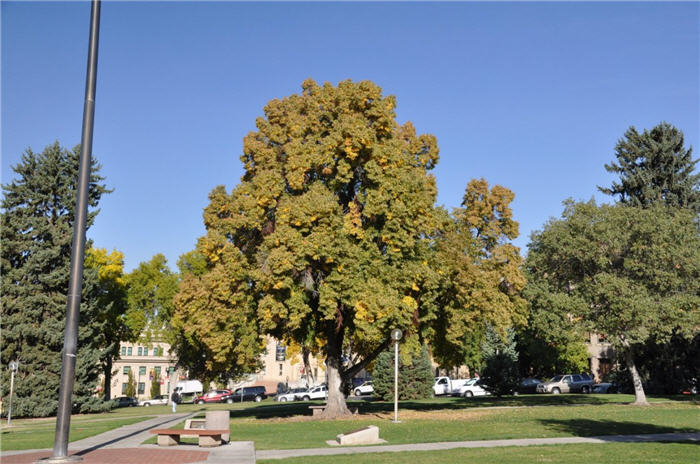| Botanical Name: Catalpa speciosa | |
| Common Name: Western Catalpa; Northern Catalpa |

-
Anatomy
-
Culture
-
Design
Plant Type
Tree
Height Range
25-40', 40-60', 60-100'
Flower Color
White
Flower Season
Spring, Summer
Leaf Color
Light Green, Yellow Green
Bark Color
Brown
Fruit Color
Black, Brown
Fruit Season
Winter, Fall
Sun
Full, Half
Water
Low, Medium
Growth Rate
Moderate
Soil Type
Sandy, Clay, Loam, Rocky, Unparticular
Soil Condition
Average, Rich, Poor, Well-drained, Moist, Dry
Soil pH
Neutral, Basic
Adverse Factors
Messy
Design Styles
Mediterranean, Ranch, Spanish, Woodland
Accenting Features
Showy Flowers, Unusual Foliage
Seasonal Interest
Spring, Summer
Location Uses
Background, Lawn, Park, Street Tree
Special Uses
Shade Tree
Attracts Wildlife
n/a
Information by: Stephanie Duer
Photographer: Gordon Courtright/Dowsett
Photographer: Gordon Courtright/Dowsett
-
Description
-
Notes
A native of the central US. Its branch structure presents a bold, rugged appearance.This large, deciduous tree has an upright and rounded form; leaves are light green to yellow-green and heart-shaped. Large white, orchid-like flowers appear above the leaves in late May to early June, and are followed by long pods. Size is variable depending on seed source and site conditions, growing between 40 and 70 feet tall and 20 to 50 feet wide. There are some lovely specimens at Liberty Park along 700 East.
Grow in full sun to part shade in well drained soil, though it will tolerate moist conditions. Indifferent to soil type; also tolerant of air pollution, clay soils, and dry soils. Known for its tolerance of tough conditions, especially heat and drought.